
Orca Guitar Logo and Project Brief - As a 9 month project, this
electric guitar design was
developed from nearly 3
months of research, with a
focus on finding ways to
update an instrument that
has seen little functional or
aesthetic changes, since it
was first introduced.
View PDF
View PDF
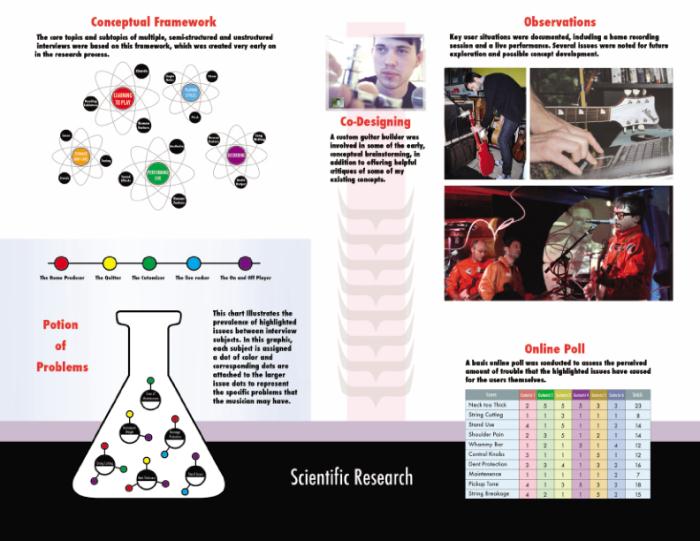
Project Research - Numerous interviews and observations were conducted, in order to find any significant issues that electric guitar players might have been having with their instruments.
View PDF
View PDF
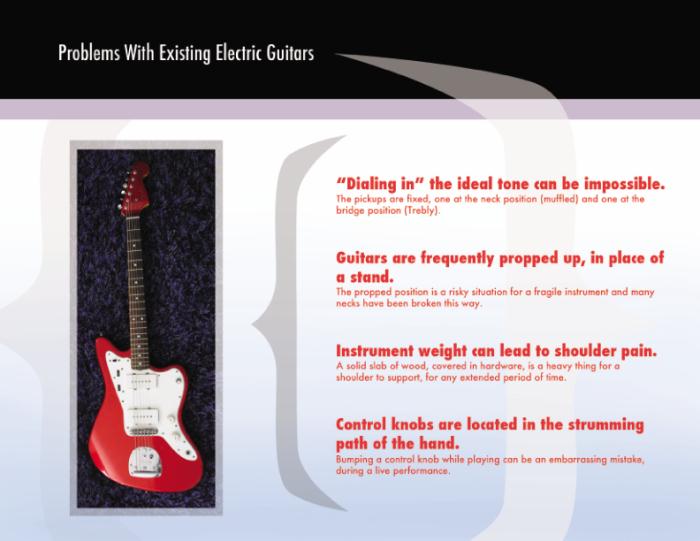
Design Drivers - Out of approximately ten significant issues found during the research phase of this project, these four issues stood out as being the most salient and solvable.
View PDF
View PDF
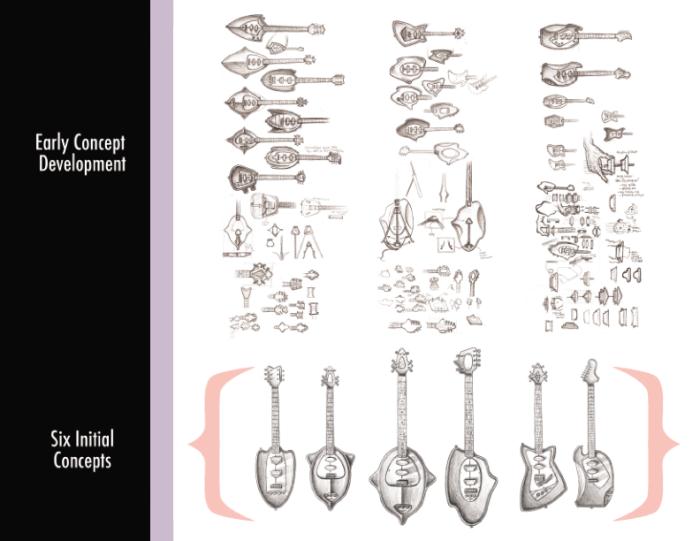
Concept Development - The early stages of concept development centered around body, headstock and pickup shapes. Most of the ideas for the Orca guitar's functional innovations came out of this early brainstorming work. Six concepts were considered, including three symmetrical designs--to fit leftys and righties--and two designs, with more of an emphasis on physical comfort while playing.
View PDF
View PDF
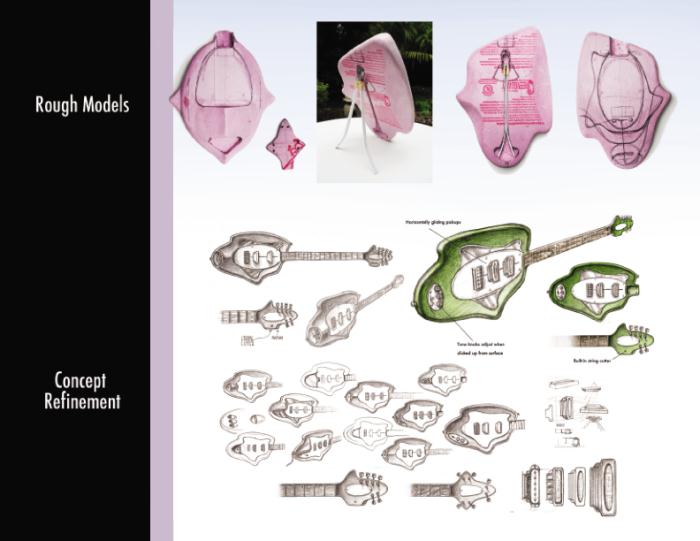
Concept Refinement - I moved forward with the two most promising concepts of the initial six, by building rough, foam models and attaching a real guitar neck to them. The organic/ergonomic design proved to be surprisingly comfortable, while the symmetrical design was quite the opposite. The next step was to finalize some of the details, including pickup, headstock, and pick guard designs, as well as figuring out how to integrate some of my solutions into this body style.
View PDF
View PDF
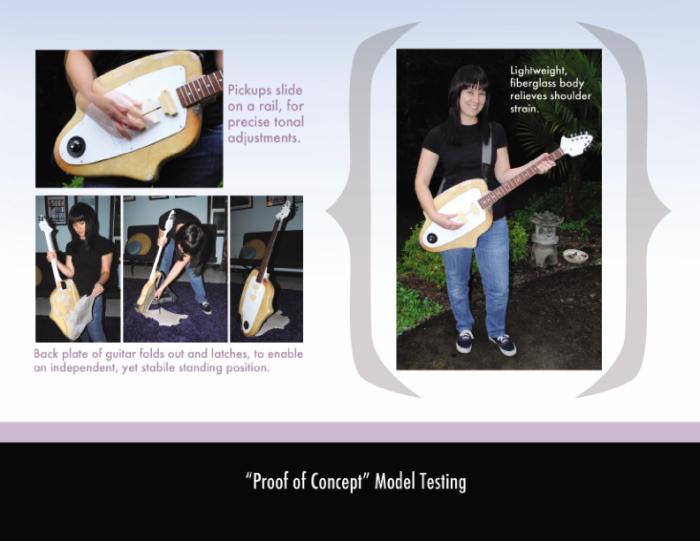
"Proof of Concept" Model - In order to solve the problem that users had mentioned, regarding the weight of a guitar, I decided to build a model out of fiberglass and polyester resin, formed over a polyurethane foam core. Faux sliding pickups were integrated into this model, for better tonal adjustment. Other innovations featured on this model included a built in stand and a strategically placed, dual-function control knob. The feedback from user testing of the fiberglass model was helpful for adjustments and fine tuning.
View PDF
View PDF

Human Factors Illustration - This graphic illustrates the helpful features, stemming from the Orca guitar's contour and the placement of the controls. This guitar is 30% lighter than a typical electric guitar, thanks to the foam filled, fiberglass and resin shell that makes up vast majority of the Orca guitar's body.
View PDF
View PDF
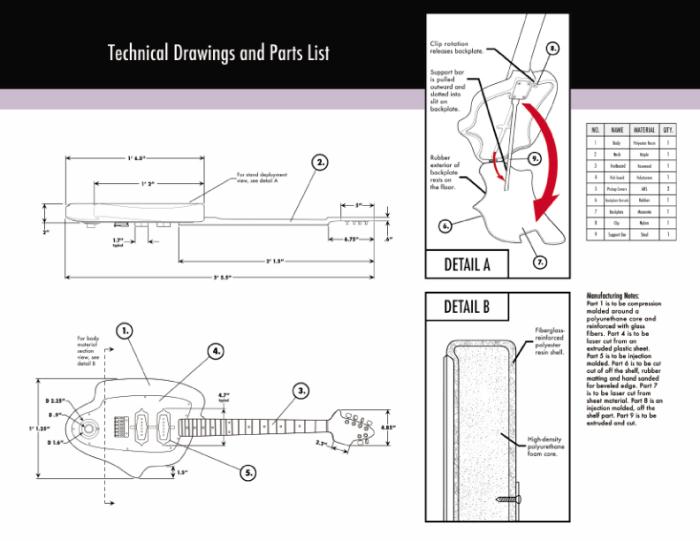
Technical Drawings - The body dimensions of this guitar are a bit thicker and longer than average, but it is still quite close to the size of a standard Fender Stratocaster. Detail A illustrates the deployment of the built-in stand.
View PDF
View PDF
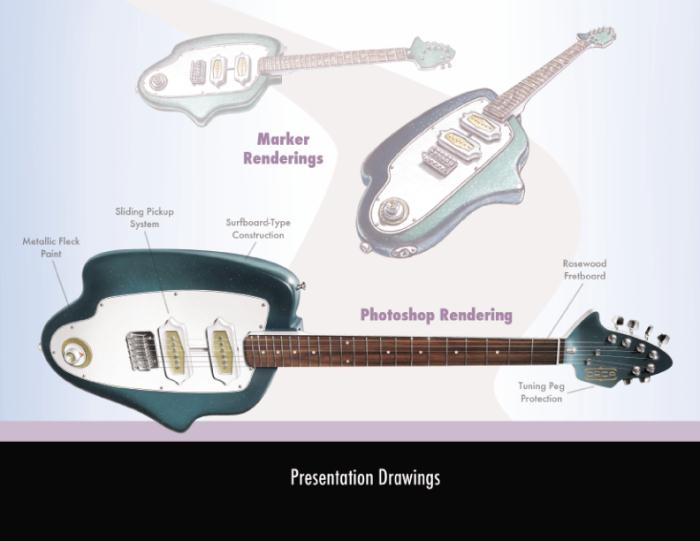
Presentation Drawings - The marker renderings represent the part of the process in which the design had become finalized and the photoshop rendering presents a cleaner depiction of this final design.
View PDF
View PDF
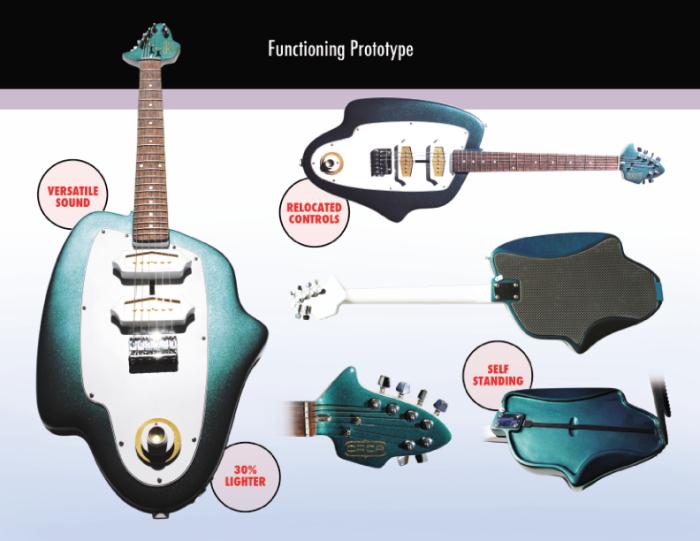
Orca Guitar Functioning Prototype - The final model is a fully functional prototype, weighing slightly less than 5 pounds. The sound is nice and the sliding pickups are easy to use. The symmetrical scoops on both sides of the pickup covers allow for an easy pinch and push--or pull--of each pickup.
View PDF
View PDF
gLike